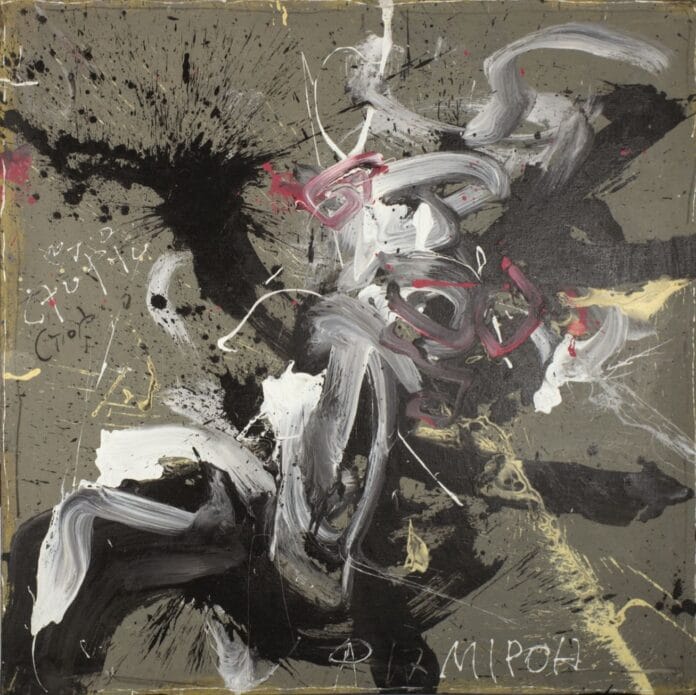Aliaksandr Falei is a contemporary painter whose work exists at the intersection of surrealism and abstraction. Drawing on a diverse range of techniques and tools—from traditional acrylics and watercolors to digital media—Falei constructs visual narratives that explore identity, memory, and the human condition. His paintings are not merely aesthetic expressions but immersive emotional experiences, shaped by bold textures, dynamic colors, and a thoughtful tension between chaos and order.
A Multidisciplinary Approach to Visual Language
Falei’s artistic process is defined by versatility. Rather than confining himself to one style or medium, he fluidly shifts between acrylics, watercolors, and digital formats, using each material to express different facets of his vision. Acrylics provide a tactile immediacy and depth, ideal for conveying emotional weight and gestural intensity. Watercolors introduce delicacy and transparency, allowing a more spontaneous interplay of color and flow. The digital space, meanwhile, opens limitless compositional possibilities, enabling experimentation that bridges traditional and contemporary forms.
This integration of mediums does more than diversify his portfolio—it reflects a deeper commitment to exploration. Falei uses his tools not just to paint, but to excavate, layering physical and digital textures to create works that feel alive with complexity and intention.
Surrealism Meets Abstraction
Falei’s paintings are often abstract, but they are never random. His compositions are marked by a surrealist sensibility—a dreamlike quality where nothing is literal, yet everything feels emotionally true. Rather than depict recognizable subjects, he builds psychological landscapes: fragmented yet unified, intense yet introspective.
The abstraction in his work is a tool for distillation. Colors are not just visual choices; they are emotional triggers. Lines and shapes do not describe objects; they describe energy, thought, and memory. In this way, Falei’s abstraction doesn’t obscure meaning—it deepens it. The surrealist undercurrent allows viewers to approach the work intuitively, interpreting each piece through their own internal experiences and associations.
Themes of Identity and Memory
Central to Falei’s practice are the themes of identity and memory. These are not treated as fixed or clear-cut concepts, but as shifting, multifaceted forces. His works often evoke the feeling of remembering—of glimpsing something once familiar, now distorted by time or emotion. Layers of paint can resemble layers of thought or recollection. Smudges, erasures, and overlays suggest the fragility of memory and the elusive nature of the self.
In exploring identity, Falei avoids literal representation. Instead, he captures the internal dialogue: the friction between past and present, between emotion and intellect, between how we see ourselves and how we are perceived. His paintings invite viewers to confront their own sense of self, not through portraits, but through atmospheres of emotion and color.
Chaos and Order in Visual Form
One of Falei’s standout works exemplifies the theme of emotional contrast through visual tension. A striking interplay of vibrant reds and deep blacks dominates the canvas, creating a charged atmosphere that commands attention. These intense hues are interrupted by swaths of soft whites and muted grays, introducing a sense of calm within the storm. The composition feels alive with motion and friction, yet balanced enough to offer moments of clarity.
This approach—juxtaposing chaos with structure, volatility with calm—captures the dual nature of the human experience. The push and pull of opposites within his work mirrors the emotional conflicts we navigate daily. Through this visual dance, Falei transforms personal emotion into a shared, almost universal language of energy and feeling.
Texture, Gesture, and Emotional Release
Texture plays a vital role in Falei’s art. In his acrylic works, especially, surfaces are built up with assertive brushstrokes, scratched lines, and layered pigments. This gives his canvases a sculptural quality—more than images, they become surfaces of sensation. The physicality of his technique echoes the emotional force behind it. Each mark feels intentional yet intuitive, like a moment of release captured in paint.
The gestures in his work are expressive without being chaotic. There is rhythm and repetition, a deliberate choreography of movement across the canvas. Even in his more tumultuous compositions, a sense of cohesion emerges, guided by an internal logic rooted in emotional truth.
Creating Impactful, Reflective Spaces
Falei’s work is visually compelling, but its real impact lies in how it affects the viewer. His paintings are designed not only to be seen but to be felt. The scale of emotion and the depth of expression resonate beyond the canvas, transforming the spaces they inhabit into reflective environments.
Whether displayed in a gallery, studio, or private setting, his pieces act as emotional anchors—bold yet contemplative, abstract yet profoundly human. They invite introspection and challenge passive viewing. Rather than telling the viewer what to feel, Falei’s work provides a space where feelings can surface, evolve, and be processed.
A Contemporary Voice Rooted in Feeling
Aliaksandr Falei’s work speaks to a broader shift in contemporary art toward emotional authenticity. In a time when much of the art world is preoccupied with irony or conceptual detachment, Falei’s paintings offer something different: rawness, honesty, and presence. His art is not about trends or aesthetics alone—it’s about engaging deeply with what it means to be alive.
By combining the unpredictability of abstraction with the insight of surrealism, and by using every tool at his disposal—traditional and digital—Falei has created a body of work that is both contemporary and timeless. His commitment to emotional exploration, combined with technical skill and a fearless use of color, marks him as a compelling voice in the global art landscape.


